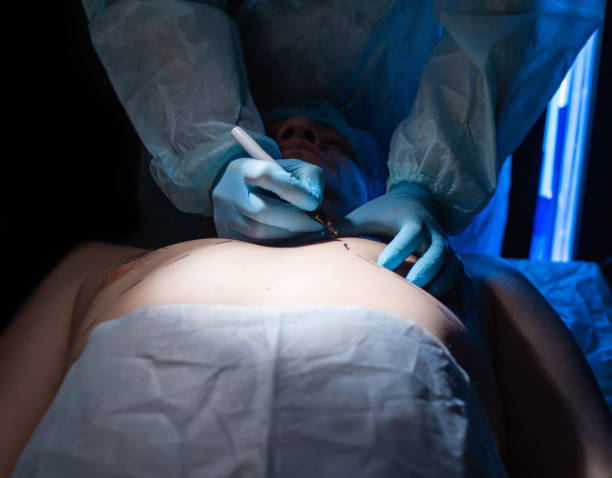Gynecomastia, a condition characterized by the enlargement of male breast tissue, often occurs during adolescence. It can be a source of concern for both adolescents and their parents. This guide aims to provide parents in Al Ain with comprehensive information about gynecomastia, its causes, treatments, and how to support their children through this condition.
Understanding Gynecomastia
Gynecomastia in Al Ain is the benign enlargement of breast tissue in males, commonly seen during puberty. It is caused by an imbalance between the hormones estrogen and testosterone. While it can affect males at any age, it is particularly prevalent during adolescence when hormonal changes are at their peak.
Causes of Gynecomastia
Several factors can contribute to the development of gynecomastia in adolescents, including:
- Hormonal Imbalance: During puberty, the levels of estrogen and testosterone can fluctuate, leading to the temporary enlargement of breast tissue.
- Medications: Certain medications, such as antidepressants, anti-anxiety drugs, and steroids, can cause gynecomastia as a side effect.
- Health Conditions: Underlying health conditions, such as thyroid disorders, liver disease, or kidney failure, can disrupt hormonal balance and lead to gynecomastia.
- Substance Use: The use of substances like alcohol, marijuana, and anabolic steroids can also contribute to the development of gynecomastia.
Signs and Symptoms
Gynecomastia is typically identified by the presence of firm, rubbery tissue beneath the nipple area. It may affect one or both breasts and can be accompanied by tenderness or sensitivity. In some cases, the enlargement is more pronounced, causing noticeable asymmetry or discomfort.
Emotional Impact
For adolescents, gynecomastia can be emotionally challenging. Feelings of embarrassment, self-consciousness, and anxiety about body image are common. It's crucial for parents to recognize these emotional aspects and provide support.
Diagnosis and Evaluation
If you suspect your child has gynecomastia, it is essential to consult a healthcare professional for an accurate diagnosis. The evaluation process typically includes:
- Medical History: The doctor will review the adolescent's medical history, including any medications or substances used.
- Physical Examination: A physical examination will be conducted to assess the extent of breast tissue enlargement.
- Hormone Testing: Blood tests may be performed to check hormone levels and identify any underlying conditions.
- Imaging Studies: In some cases, imaging studies like ultrasound or mammography may be recommended to rule out other potential causes of breast enlargement.
Treatment Options
The treatment approach for gynecomastia depends on the underlying cause and the severity of the condition. Options include:
1. Watchful Waiting
In many cases, especially during puberty, gynecomastia may resolve on its own without any intervention. The doctor may recommend a period of watchful waiting to see if the condition improves naturally over time.
2. Medications
If hormonal imbalance or an underlying condition is identified, medications may be prescribed to address the issue. For example, medications that reduce estrogen levels or increase testosterone levels can help restore hormonal balance.
3. Surgical Intervention
In severe or persistent cases, surgical intervention may be considered. The two primary surgical options are:
- Liposuction: This procedure removes excess fat from the breast area.
- Mastectomy: This surgery removes glandular breast tissue and is often performed using minimally invasive techniques.
Supporting Your Child
Open Communication
Maintain open and supportive communication with your child. Encourage them to share their feelings and concerns about their condition. Let them know that gynecomastia is a common and treatable condition.
Education and Reassurance
Educate your child about gynecomastia, emphasizing that it is a temporary condition that often resolves on its own. Reassure them that they are not alone and that many other adolescents experience similar changes.
Professional Support
Consider seeking support from a mental health professional if your child is experiencing significant emotional distress or body image issues related to gynecomastia. Counseling can help them cope with their feelings and build self-confidence.
Frequently Asked Questions (FAQs) about Gynecomastia
1. Is Gynecomastia Permanent?
In most cases, gynecomastia during adolescence is temporary and resolves on its own as hormone levels stabilize. However, if the condition persists for more than two years or causes significant distress, medical intervention may be necessary.
2. Can Gynecomastia Be Prevented?
While gynecomastia related to hormonal changes during puberty cannot be entirely prevented, avoiding substances like alcohol, marijuana, and anabolic steroids can reduce the risk of developing the condition.
3. How Long Does Gynecomastia Last?
The duration of gynecomastia varies among individuals. For many adolescents, it lasts between six months to two years. If the condition persists beyond this period, further evaluation and treatment may be needed.
4. Does Gynecomastia Affect Health?
Gynecomastia itself is not harmful and does not pose any significant health risks. However, it can cause emotional distress and impact self-esteem, making it essential to address the psychological aspects of the condition.
5. When Should Surgery Be Considered?
Surgery is typically considered for severe or persistent cases of gynecomastia that do not resolve with watchful waiting or medical treatment. It may also be an option if the condition causes significant discomfort or emotional distress.
Conclusion
Gynecomastia is a common condition during adolescence that can be challenging for both adolescents and their parents. Understanding the causes, symptoms, and treatment options is crucial for providing the necessary support and guidance. By maintaining open communication, seeking professional medical advice, and addressing the emotional aspects of gynecomastia, parents in Al Ain can help their children navigate this condition with confidence and reassurance.





Comments